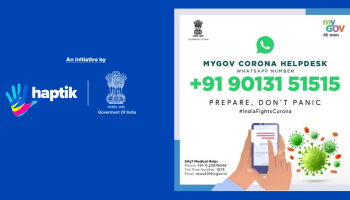WhatsApp Chatbot Performance Optimization: Key Metrics & Strategies
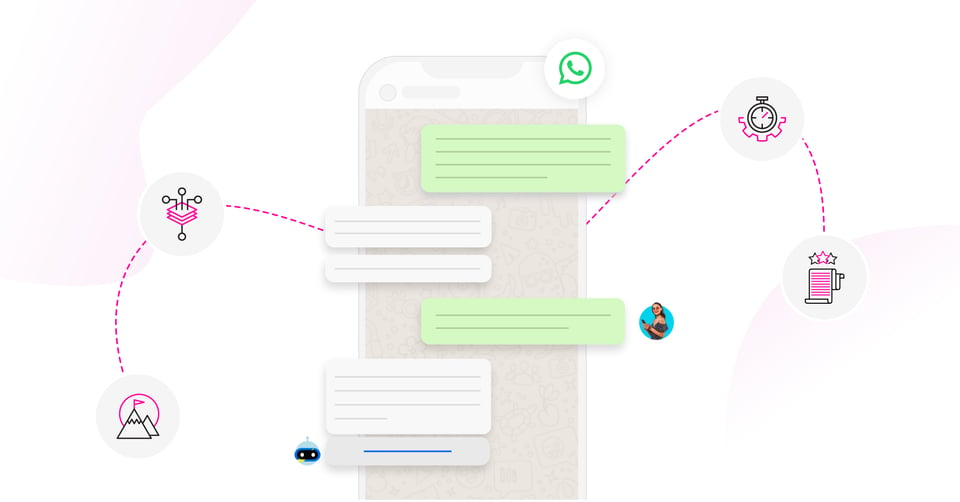
The widespread adoption of WhatsApp among consumers has prompted businesses to explore its potential as a customer engagement platform. One promising avenue is the utilization of WhatsApp Chatbots, which offer companies automated tools and chatbot analytics to connect with customers, address inquiries, and facilitate sales. An all-in-one WhatsApp Chatbot drives brand awareness, generates quality leads, and enhances customer loyalty.
However, merely incorporating an AI-powered WhatsApp Chatbot to automate tasks is insufficient for achieving optimal results. Continually refining the chatbot's functionality to attain predetermined goals is equally essential. Our Click to Haptik analytics provides a straightforward means to evaluate its effectiveness, enabling businesses to measure chatbot performance in relation to specific objectives.
In this blog post, we will explore the following topics:
I. The Advantages of Measuring WhatsApp Chatbot PerformanceII. Key Metrics for Measuring WhatsApp Chatbot Performance
III. Strategies for WhatsApp Chatbot Optimization
Wrapping Up
I. The Advantages of Measuring WhatsApp Chatbot Performance
Incorporating chatbot analytics is crucial for optimizing its performance. By establishing a feedback loop, businesses can identify and improve the areas where they lag, leading to increased business performance. Moreover, analytics provide valuable insight for developing customer retention strategies.
The main areas where chatbot metrics assist are:
- Analyze the Effectiveness of Chatbots
By implementing chatbot analytics and key performance indicators (KPIs), it becomes possible to assess the efficacy of WhatsApp Chatbots in meeting business objectives. Through these metrics, it is possible to evaluate customer perception and satisfaction with chatbot interactions and their ability to guide users toward desired actions. The resulting insights allow for tracking chatbot effectiveness, identifying areas for improvement, and ultimately, optimizing its performance.
- Accessing Customer Journey
Being data-driven necessitates visualizing specific aspects of the customer journey, including user paths, pain points, and exit points. An effective WhatsApp Chatbot solution includes an analytics dashboard that facilitates mapping such details, thereby enhancing comprehension of the customer journey. This allows businesses to make informed decisions regarding chatbot optimization and overall user experience.
- Evaluate Business ROI
Chatbots can generate significant returns on investment with minimal effort, as 57% of businesses acknowledge. Through chatbot analytics, it becomes possible to measure key performance indicators such as leads generated, issues resolved, and cost per lead, allowing for performance comparisons with other channels. Additionally, analytics can identify simple queries that can be automated through chatbots, enabling estimation of time and cost savings.
II. Key Metrics for Measuring WhatsApp Chatbot Performance
Measuring chatbot performance entails utilizing three distinct types of metrics: user engagement, chatbot efficiency, and business key performance indicators (KPIs). Each metric type is oriented towards achieving a particular objective and is critical to steering and overseeing strategic initiatives of any nature.
User Engagement Metrics
- Total Conversations Handled
Tracking the "Total Conversations Handled" metric enables the WhatsApp chatbot to capture the number of unique conversations it has handled over a set timeframe. This metric provides insights into user and conversation number variations and the volume of user data processed. Comparisons with user totals on other platforms allow businesses to discern the most favored channel among their target audience.
- Message Open Rate
This metric for WhatsApp Chatbot is a valuable measurement tool for businesses to track the success of user engagement. It provides crucial insights into the number of bot-sent messages that are being opened and read by users. By analyzing this metric, businesses can better understand the effectiveness of their chatbot's messaging strategy and determine how many users are taking action based on the information provided in the messages.
- Message Response Rate
The "Response Rate" metric for WhatsApp Chatbots refers to measuring how many users actively engage with the bot by responding to its messages. It tracks the number of responses received compared to the number of messages sent by the chatbot, providing insights into the effectiveness of the bot's messaging strategy and its ability to engage users in two-way conversations.
Chatbot Efficiency Metrics
- Response Time
The "Response Time" metric measures the duration between a user's message and the WhatsApp chatbot's reply. This metric provides insights into its efficiency and promptness in handling inquiries. A shorter response time is desirable, indicating better customer service and user engagement. The metric is an important KPI for businesses to optimize chatbot performance and improve user satisfaction to achieve desired outcomes.
- Accuracy Rate
The accuracy rate metric for WhatsApp Chatbots pertains to the percentage of user inquiries that are correctly resolved without any human intervention. This is calculated by comparing the total number of user interactions with the bot to the number of successful responses. The accuracy rate provides a valuable indicator of a chatbot's ability to comprehend and address user inquiries, which is crucial in assessing overall performance.
- Customer Satisfaction Rate (CSAT)
The customer satisfaction key performance indicator (KPI) measures the level of satisfaction among users with their interaction with the WhatsApp Chatbot. This is important in determining the chatbot's effectiveness in meeting user needs and preferences. Businesses can use surveys, including star ratings or emoticons, to collect user feedback and gauge their satisfaction. These surveys help companies to evaluate their performance and allow users to express any concerns or issues with the chatbot service.
Business KPI Metrics
- Conversion Rate
The conversion rate is a metric used to measure the success of intelligent WhatsApp Chatbots in assisting customers through their journey, from initial awareness to the point of making a purchase. This metric enables businesses to determine the number of customers who have completed a purchase transaction within the chat interface.
- Retention Rate
Chatbot retention rate is a vital metric that gauges the percentage of users interacting with the WhatsApp Chatbot repeatedly during a specific period. The chatbot's purpose determines the metric's relevance. Evaluating retention rates in segmented time frames can unveil significant milestones in the customer journey and enable businesses to enhance customer engagement strategies. Personalized incentives and tailored conversations are effective methods to boost chatbot retention rates.
- Customer Acquisition Rate
It refers to the rate at which new customers are acquired through a WhatsApp Chatbot. It is a key performance indicator (KPI) that measures the effectiveness of a chatbot's ability to attract and convert new users. A low customer acquisition rate indicates that the chatbot successfully engages new users and encourages them to use its services. The rate can be calculated by dividing the number of new users acquired by the total number of users interacting with the chatbot, over a specific period.
- Conversational Ads
Conversational Ads is a metric that measures the effectiveness of ads delivered through a WhatsApp Chatbot. It is an interactive advertisement that allows users to converse with the advertiser through the chatbot. Conversational Ads aim to create a personalized and interactive experience for the user while promoting the advertiser's product or service. The metric measures the engagement levels of users with the conversational ad, including the number of clicks, response rates, and conversion rates. It helps businesses to optimize their ad campaigns and improve the overall effectiveness of their WhatsApp chatbot.
III. Strategies for WhatsApp Chatbot Optimization
To fully leverage the potential of a WhatsApp chatbot, businesses must optimize their chatbot strategies by comprehending user behavior, enhancing chatbot efficiency, and integrating organizational objectives.
Understanding User Behavior
- User Demographics
By gathering information about user demographics, businesses can tailor their chatbot strategy to match the needs and preferences of their target audience. This includes factors such as age, gender, location, and language preference, which can all impact users' queries and how they interact with the chatbot.
- Common User Queries
Furthermore, businesses can train their chatbot to efficiently handle frequently asked questions by identifying common user queries and providing quick and accurate responses that enhance the customer experience. This saves time for both the user and the business and reduces the workload for customer service agents.
- Popular Time of Use
Understanding when the users are most actively engaging with WhatsApp Chatbots allows businesses to optimize its availability, ensuring that the chatbot is available during peak usage periods and providing round-the-clock support. This helps to enhance the user experience by providing immediate responses to queries and building customer trust in the chatbot's reliability.
Improving Chatbot Efficiency
- Continuous Testing and Optimization
Regular testing and optimization of the chatbot's conversational flow, time taken to respond to queries, and accuracy can help improve its efficiency. By monitoring user interactions and feedback, businesses can identify areas that require improvement and optimize the chatbot accordingly.
- Regular Updates and Maintenance
Businesses must regularly update and maintain its features and functionalities. This includes fixing bugs, adding new features, integrating the chatbot with other systems, and upgrading its capabilities to ensure that it remains relevant and meets customers' changing needs. By doing so, businesses can keep their chatbot up-to-date and ensure that it provides a seamless experience for users.
- Personalization & Customization
Personalizing the chatbot's responses and developing smart skills, based on user behavior and preferences can help improve its efficiency. Businesses can tailor the chatbot's responses to each user's unique needs by utilizing user history data and preferences. This creates a more personalized experience for users, leading to higher engagement and better customer satisfaction.
Integrating Business Goals
- Setting Clear Objectives
Businesses must identify the specific outcomes they wish to achieve through the chatbot. These may include objectives such as increasing sales, improving customer retention, or reducing customer support costs. By setting clear and specific objectives, businesses can ensure that their chatbot strategy is aligned with their overall goals and focused on achieving tangible outcomes that contribute to their success.
- Regular Monitoring & Analysis
To ensure optimal performance of their WhatsApp Chatbot, businesses need to consistently track key metrics, such as customer satisfaction, acquisition and retention rates, conversion rates, and conversational ad traffic. By regularly analyzing this data, businesses can make informed decisions about optimizing their chatbot strategy to achieve their desired outcomes.
- Making Data-Driven Decisions
By using data and analytics to inform decision-making, businesses identify patterns and trends in user behavior and adjust their chatbot strategy accordingly. This includes making informed decisions about chatbot design, functionality, and content based on user preferences and interactions. Ultimately, data-driven decisions are essential for creating a chatbot that delivers the best possible user experience and drives business success.
Wrapping Up
In conclusion, leveraging chatbot analytics is imperative to assess the chatbot's performance and align it with business objectives and customer expectations. As Gartner Research aptly puts it, "information is the oil of the 21st century, and analytics is the combustion engine". Hence, selecting the appropriate key performance indicators (KPIs) is critical to gauge the chatbot's overall effectiveness and identify areas for improvement.
At Haptik, we can help businesses leverage these insights, refine the bot's flow and enhance the communication process to enhance customer experience and drive business growth.
Connect, Engage, and Empower Your Business with WhatsApp







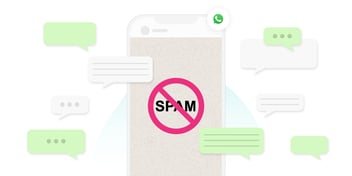

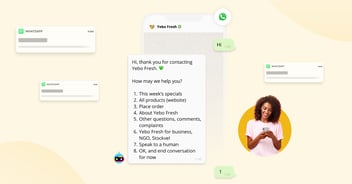
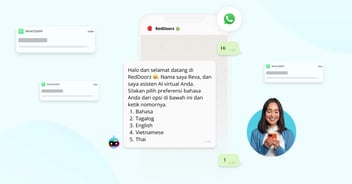
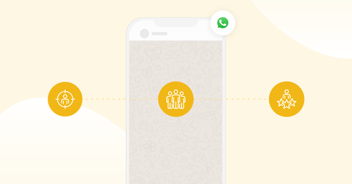
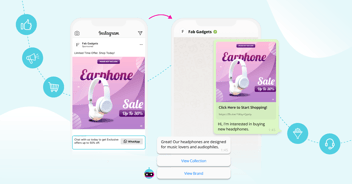
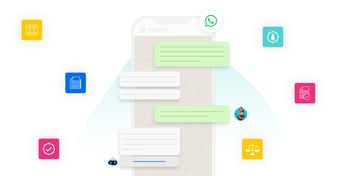

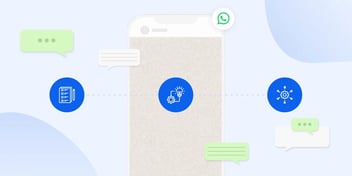
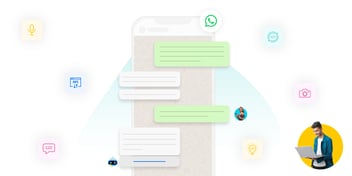
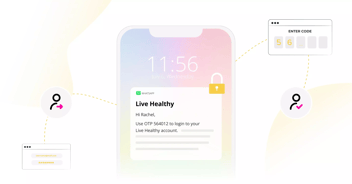
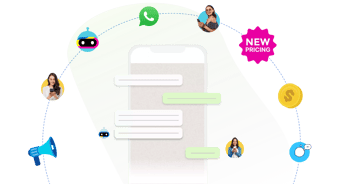
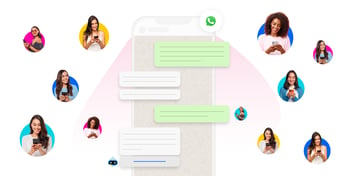

.png?width=352&name=Header%20(5).png)







.png?quality=low&width=352&name=CORONA_Helpdesk_Blog%20(1).png)
.png?width=352&name=image-(1).png)



.webp?width=352&name=new-whatsapp-ecom%20(1).webp)




